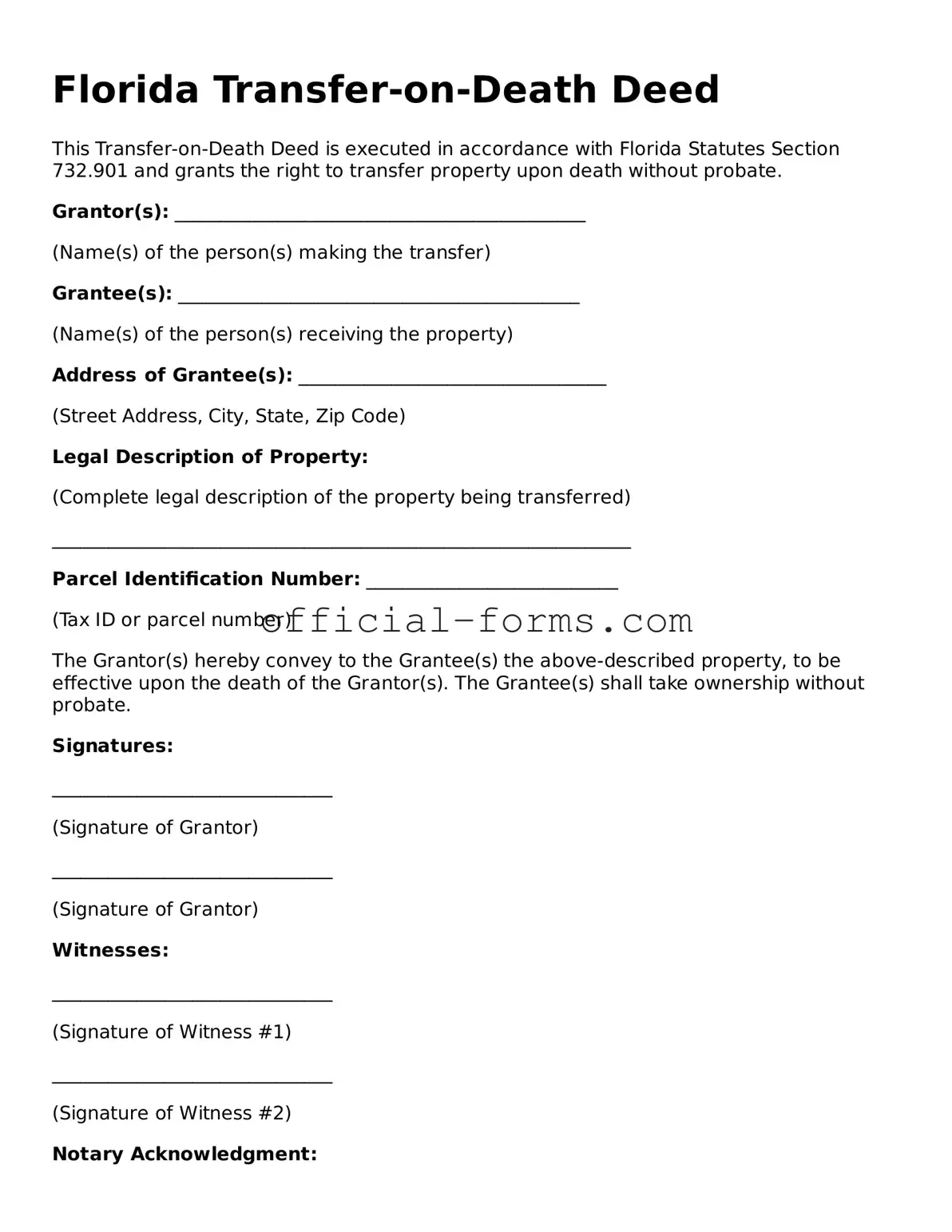Filling out a Florida Transfer-on-Death Deed form can seem straightforward, but there are common mistakes that many people make. One significant error is not including all required information. The form asks for specific details about the property and the beneficiaries. Missing even a small piece of information can lead to delays or complications in the future.
Another frequent mistake is failing to properly identify the beneficiaries. It's crucial to use full legal names and, if applicable, include their relationship to the property owner. Inaccurate names can create confusion and may lead to disputes later on.
People often overlook the need for proper execution of the deed. The form must be signed in the presence of two witnesses and notarized. Skipping this step can render the deed invalid. It’s essential to follow these requirements closely to ensure that the deed is legally binding.
Additionally, many individuals neglect to record the deed with the county clerk's office. Even if the deed is completed correctly, it must be filed to take effect. Failing to do this means the transfer may not be recognized after the owner's death.
Some people mistakenly believe that the Transfer-on-Death Deed can be used for all types of property. However, this deed is limited to real estate. Attempting to use it for personal property or financial accounts can lead to complications.
Another common issue arises from not understanding the implications of the deed. Some individuals may not realize that the property will pass directly to the beneficiaries upon death, bypassing probate. This can be a double-edged sword, as it may also affect the beneficiaries' tax situations or their ability to manage the property.
Lastly, failing to review and update the deed can be a significant oversight. Life changes, such as marriage, divorce, or the birth of a child, can affect who should inherit the property. Keeping the deed current ensures that it reflects the owner’s wishes.
